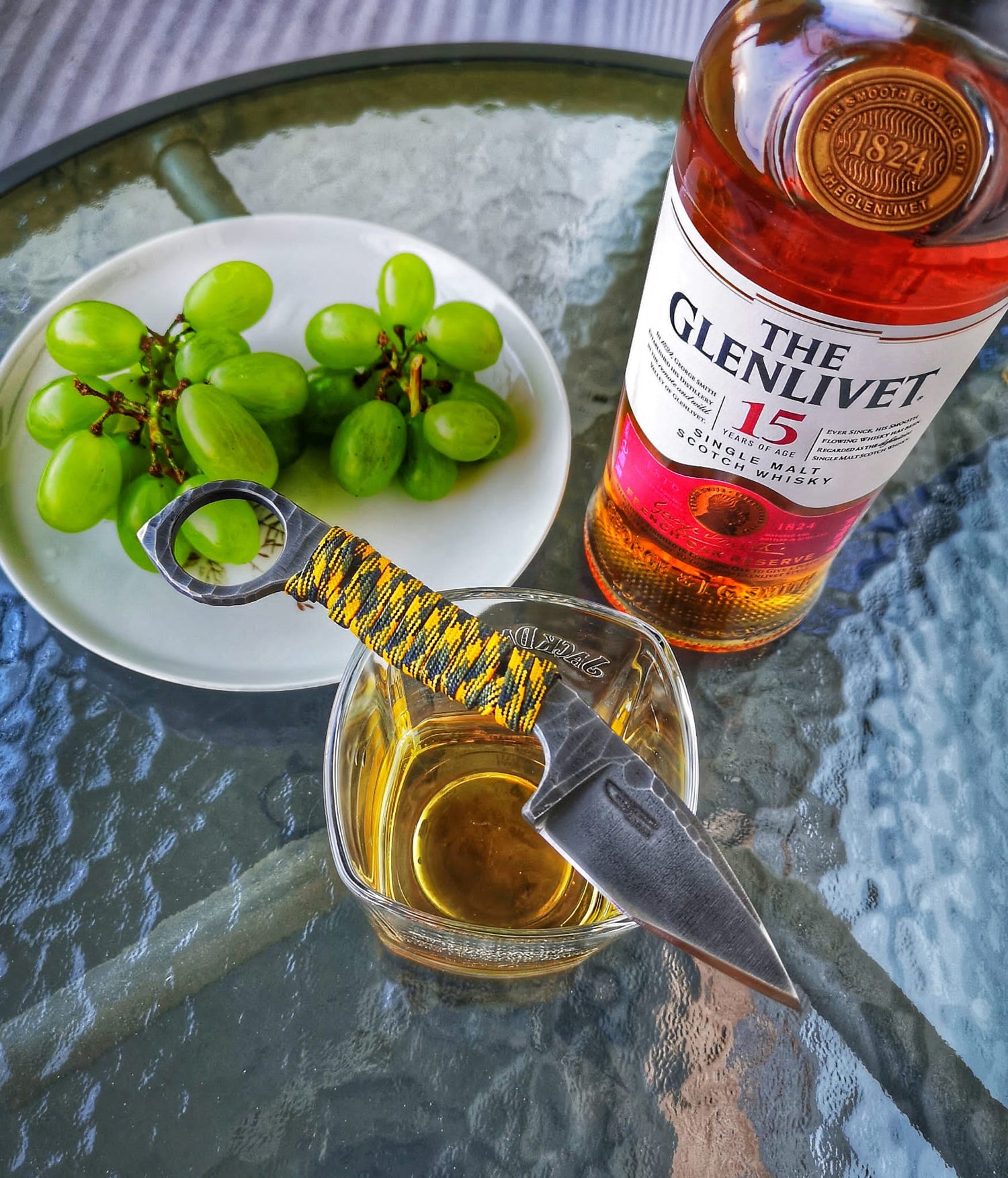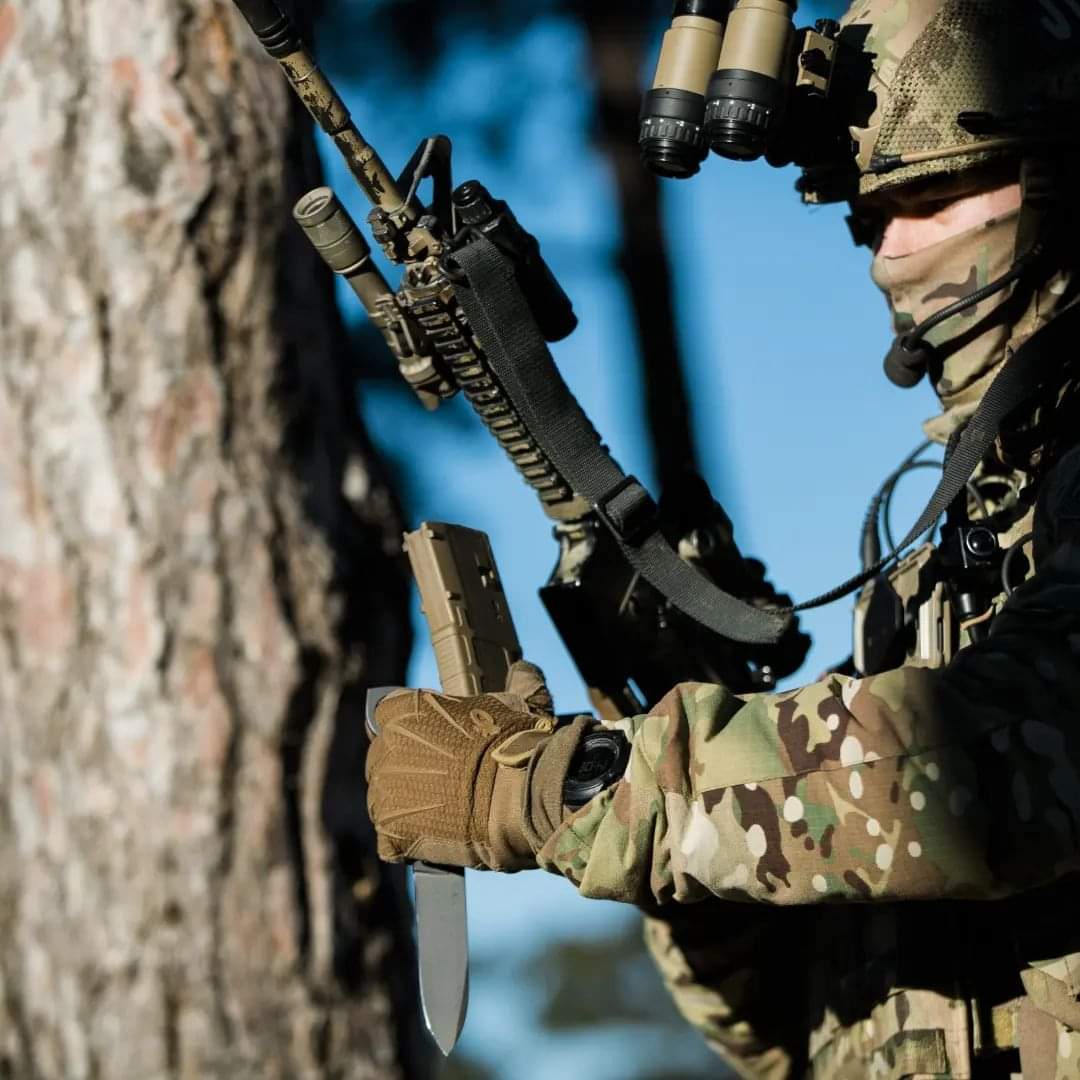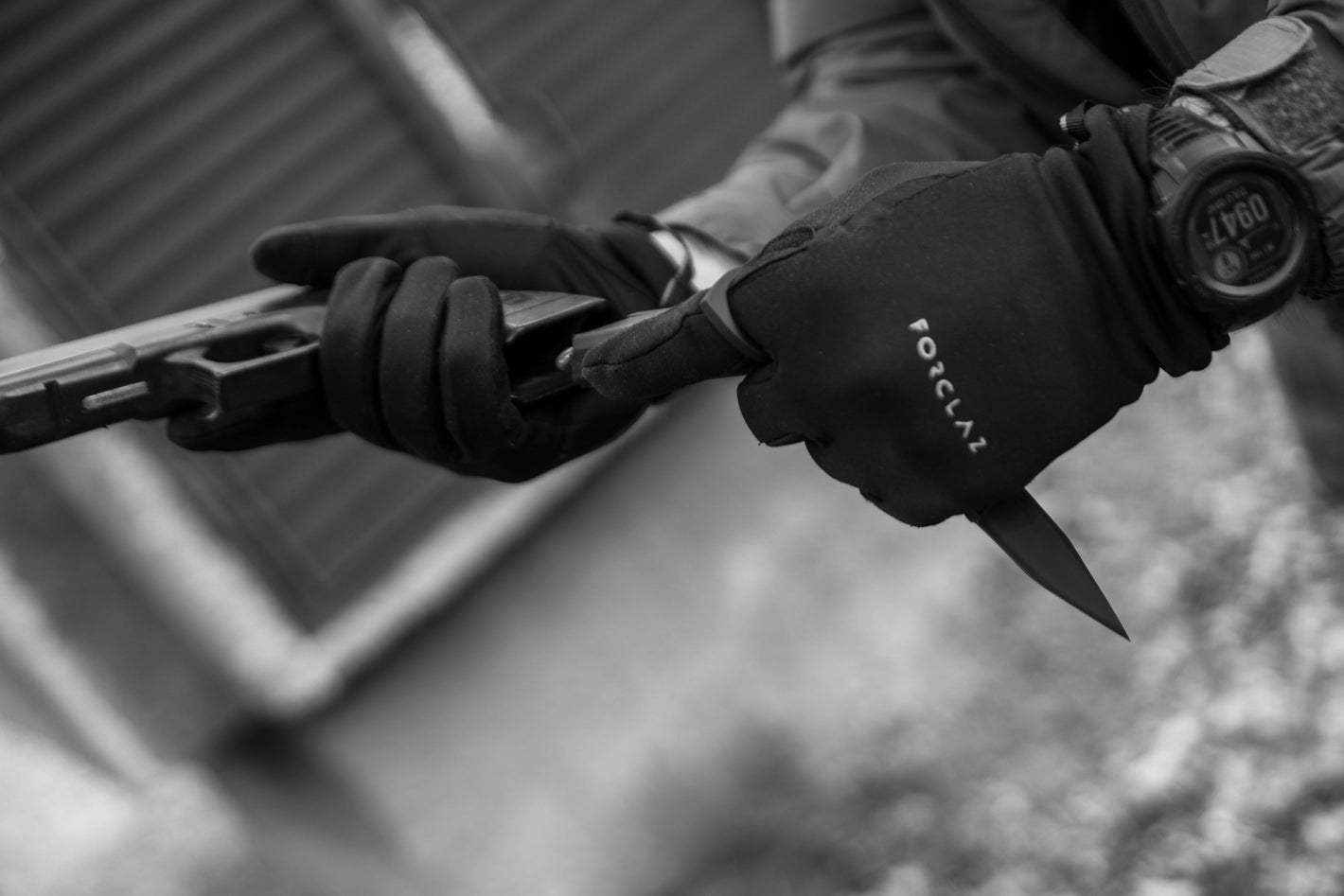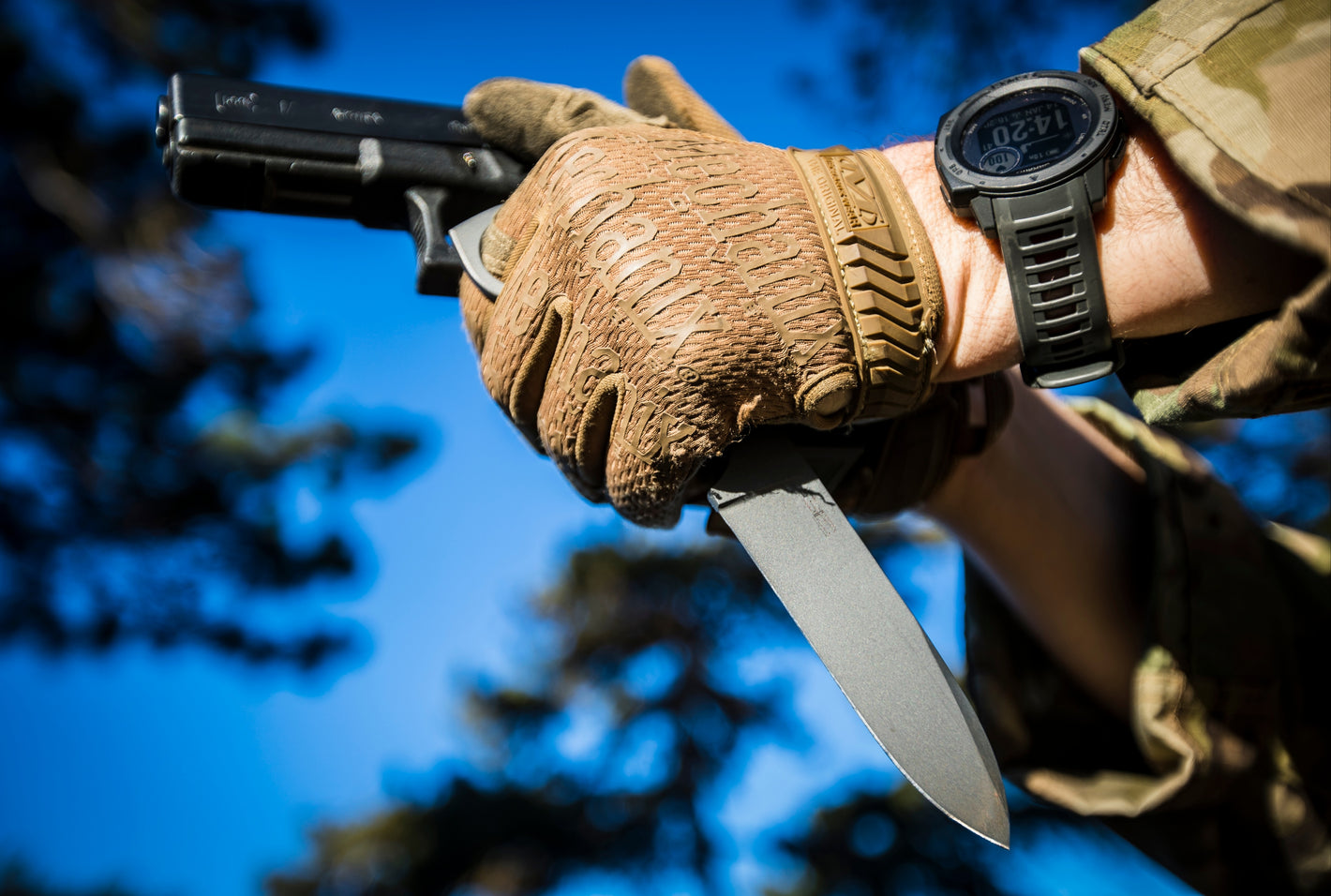Blade Steels
As a knife maker one of my key focus areas are knife steel and heat treatment. I read metallurgy, blogs, books and papers as a hobby intensively and I put all my expertise and the available science when deciding to go down a specific material and heat treatment for each knife.
All my production blades are heat treated with the biggest Hungarian knife material supplier with constant quality control and close coordination. At the same time the custom blades are heat treated by me, through the entire process. My protocols are based on the studies, articles and book from Dr. Larrin Thomas metallurgist.
Knife steel has 3 main characteristics: Toughness (resistance to breaking and chipping), Wear resistance (translates to edge retention) and stain resistance. These 3 character traits go against each other. If we want to achieve a specific goal, we need to sacrifice 1, to promote and focus on the other 2.
When we talk about modern day steels, Stainlessness is the main priority for most, however stainless steels were not in existence till the early 20th century. A carbon steel or tool steel blade can be taken care of, and we accept and sacrifice some of the comforts of stainless-ness in order to reach a zone where ultimate toughness, edge stability, chipping resistance and wear resistance comes to picture.
Here are the steels I use and prefer for both my customs and production blades.
52100
All my production blades are heat treated with the biggest Hungarian knife material supplier with constant quality control and close coordination. At the same time the custom blades are heat treated by me, through the entire process. My protocols are based on the studies, articles and book from Dr. Larrin Thomas metallurgist.
Knife steel has 3 main characteristics: Toughness (resistance to breaking and chipping), Wear resistance (translates to edge retention) and stain resistance. These 3 character traits go against each other. If we want to achieve a specific goal, we need to sacrifice 1, to promote and focus on the other 2.
When we talk about modern day steels, Stainlessness is the main priority for most, however stainless steels were not in existence till the early 20th century. A carbon steel or tool steel blade can be taken care of, and we accept and sacrifice some of the comforts of stainless-ness in order to reach a zone where ultimate toughness, edge stability, chipping resistance and wear resistance comes to picture.
Here are the steels I use and prefer for both my customs and production blades.
52100
52100 is a low alloy ball bearing steel in existence since the early 20th century. It was the main bearing material for NASA space rockets for 40 years, and a favorite choice for knifemakers due to its fine grain structure and great properties.
It has 1% Carbon content and 1.5% Chromium added, which supports the steel matrix to achieve best in class edge retention, edge stability and toughness as well.
The added Chromium helps and supports corrosion resistance to some extent; however, this is still a low alloy carbon steel that requires proper care and is not suited for saltwater environments.
You can find this steel under the name of 102Cr6 or SR101 (Busse proprietary) at other places.
This steel is the backbone of the production line knives, and from time to time it shows up in my customs as well. For corrosion resistance we go with a Cerakote coating on the production blades, which provides complete protection in the coated areas.
The added Chromium helps and supports corrosion resistance to some extent; however, this is still a low alloy carbon steel that requires proper care and is not suited for saltwater environments.
You can find this steel under the name of 102Cr6 or SR101 (Busse proprietary) at other places.
This steel is the backbone of the production line knives, and from time to time it shows up in my customs as well. For corrosion resistance we go with a Cerakote coating on the production blades, which provides complete protection in the coated areas.
| Carbon | 0.95 - 1 % |
| Chromium | 1.4 - 1.5 % |
| Manganese | 0.3 % |
| Silicion | 0.25 % |
APEX ULTRA
Apex Ultra is freshly developed steel designed for custom cutlery. The developers used the benefits of the 52100 alloy, and decided to add some spice to create an alloy with amazing edge stability and edge retention. The base alloy was boosted with added Carbon, Vanadium and a significant amount of Tungsten. The end result is the toughest steel at 66+ HRC range, with amazing edge retention.
The toughness of this steel at 62-63 HRC Range is still better than 1095 at 60HRC. Fantastic steel to use and abuse. I make customs and limited run of production as well from Apex Ultra.
For the customs and production as well depending on the intended purpose, I aim for hardness between 61-64 HRC, depending on the use.
Apex Ultra is freshly developed steel designed for custom cutlery. The developers used the benefits of the 52100 alloy, and decided to add some spice to create an alloy with amazing edge stability and edge retention. The base alloy was boosted with added Carbon, Vanadium and a significant amount of Tungsten. The end result is the toughest steel at 66+ HRC range, with amazing edge retention.
The toughness of this steel at 62-63 HRC Range is still better than 1095 at 60HRC. Fantastic steel to use and abuse. I make customs and limited run of production as well from Apex Ultra.
For the customs and production as well depending on the intended purpose, I aim for hardness between 61-64 HRC, depending on the use.
| Carbon | 1.25 % |
| Chromium | 1.5 % |
| Manganese | 0.3 % |
| Silicon | 0.35 % |
| Vanadium | 0.4 % |
| Tungsten | 2.6 % |
A2 Tool Steel
A2 is an old workhorse tool steel. Designed in the early 20th century it was one of the earliest Air Hardening tool steels. Generally speaking, A2 does not excel in anything, however it does a very solid job in everything. Wear resistance and corrosion resistance is better than 52100, and still have a very good toughness. A2 is tougher than almost every modern stainless steel apart from the powder metallurgy steels. In short, you can't go wrong with A2.
| Carbon | 1 % |
| Chromium | 5.3 % |
| Manganese | 0.6 % |
| Silicon | 0.3 % |
| Vanadium | 0.2 % |
| Molybdenum | 1.1 % |
Vanadis 4 Extra
Vanadis 4 Extra is hands down, one of my favorite steels. This is a Powder Metallurgy vanadium alloyed tool steel, product of Bohler-Uddelholm. This alloy is no joke, brings the best of all. As a tool steel it is not stain resistance, but the alloy was designed to create vanadium carbides (hardest particles for edge wear resistance) and most of its chromium supports stain resistance.
High edge retention, high possible hardness, high toughness, great ductility, and resistance to chipping, makes it a fantastic steel for custom knives. Large blades are good up to 60-62 HRC, smaller blades can easily achieve 64-66 HRC. This steel due to the difficulty and cost of manufacturing is only available in custom knives.
High edge retention, high possible hardness, high toughness, great ductility, and resistance to chipping, makes it a fantastic steel for custom knives. Large blades are good up to 60-62 HRC, smaller blades can easily achieve 64-66 HRC. This steel due to the difficulty and cost of manufacturing is only available in custom knives.
| Carbon | 1.4 % |
| Chromium | 4.7 % |
| Molybdenum | 3.5 % |
| Manganese | 0.4 % |
| Silicion | 0.4 % |
| Vanadium | 3.7 % |
Vanax Superclean
Vanax Superclean is a 3rd generation powder metallurgy nitrogen alloyed stainless steel from Bohler Uddelholm. Vanax was designed for highly corrosive environments where fine structure is required for high toughness.
This steel is stainless, in a level which surpasses everything else in existence. I use this steel because it has similar edge retention to Vanadis 4 Extra, yet have better toughness than most stainless steel, and world class stain resistance with the proper heat treatment. If it does all good, what is the downside?
Downside is price and availability; this is one of the costliest materials the knife industry uses today.
| Carbon | 0.36 % |
| Chromium | 18.2 % |
| Molybdenum | 1.1 % |
| Manganese | 0.3 % |
| Silicon | 0.3 % |
| Vanadium | 3.5 % |
| Nitrogen | 1.55 % |
A8mod
A8mod is also known as chipper steel. This is and Air/Oil/Vacuum hardening tool steel with extreme toughness and resistance to chipping. The Carbon content makes it almost stain resistant. This steel is an ideal solution for large blades or anything a maker wants to make indestructible.
You can see this steel in use with custom makers mostly. The most famous is Busse knives INFI steel which has a very similar composition. Working hardness is 58-60 HRC.
| Carbon | 0.45 - 0,55 % |
| Chromium | 8-9 % |
| Molybdenum | 1.1 - 1.5 % |
| Manganese | 0.4 % |
| Silicon | 0.9 - 1.0 % |
| Vanadium | 0.4 - 0.6 % |
| Sulfur | 0.035 % |
Gr5 Titan (6Al4V)
God`s Metal as some like to refer to Gr5 Titanium. This non metallic blade material is one of the most unique materials one can work as a knife maker. This biocompatible, non magnetic and non-corrosive metal can survive longer than any human being. Used most widely in the aerospace industry, and this is the most common Titanium you can find in various application. Hardness from factory is around 38-41 HRC and with custom heat treatment can achieve 43-46 HRC Hardness. The extreme toughness and difficult machinability with low strength and max hardness makes this material inferior compared to many steels. However it has some advantages over many other alloys. Can survive in the acidic seas on the surface of Venus, when anodized can achieve vibrant colors, almost indestructible with a lifespan of more than 100.000 Years. With the proper treatment and carbidized edge (micro welded Tungsten carbide 86 HRC on the edge) it can be used as a nice cutting instrument with a long lasting edge for soft materials. It likes pulling cuts, can cut meat and other soft materials for eternity, non-metallic, can go through metal detector gates (not recommended) and can be a great underwater companion.
| Aluminium | 6.25 % |
| Vanadium | 4.0 % |
| Carbon | 0.08 % |
| Nitrogen | 0.05 % |
| Oxygen | 0.20 % |
| Titanium | 89.5 % |




